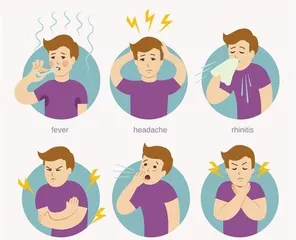The calories of one packet of potato chips are equal to three bowls of rice

The calories of a pack of potato chips are equal to three bowls of rice.

The calories of a bottle of cola are equal to two bowls of rice





Warm reminder:
It is difficult to get rid of the trouble of high fat and high energy for any crunchy and delicious food. Even with the title of non-fried, even fruits and vegetables as raw materials, they still need to be highly paid attention. Any beverage with a delicate and smooth taste cannot shake off the label of high sugar and high energy. Even if there are sugar-free drinks, it is a substitute containing other sugars that is more terrible than sugar!
Four golden rules for choosing snacks reasonably
1) Choose personal snacks according to your physical condition and meal intake status. If the energy intake of three meals is insufficient, you can choose energy-rich snacks to supplement them; for people who need to control energy intake, foods with sugar or fat content are restricted snacks and should be eaten as little as possible; if the intake of vegetables and fruits for three meals is insufficient, vegetables and fruits should be selected as snacks.
2) Snacks with high nutritional value should be chosen, such as fruits, dairy products, nuts, etc. The nutrients provided can be used as a supplement in addition to meals. Snacks also have rankings: fresh vegetables eaten raw, fresh fruits, milk and dairy products, nuts, and dried fruits.
3) Select the appropriate time. Snacks can be eaten appropriately between meals so as not to affect your appetite for dinner. You can also eat snacks 2-3 hours after dinner, but you should not eat any more half an hour before going to bed.
4) The amount of snacks should not be too large to avoid affecting the appetite and amount of food for dinner; among similar foods, you can choose ones with lower energy to avoid excessive energy intake.
Nuts are indispensable during the Chinese New Year, especially melon seeds. In my hometown, I will buy them in bulk during the Chinese New Year. In order to eat healthier, I will teach you five tricks to develop my eyes and choose the right melon seeds in bulk:
Look: It is recommended not to buy colored melon seeds. Especially green ones, vendors often promote them as green tea melon seeds, which are healthy and pollution-free. However, they don't know that they are just green tea flavored melon seeds dyed with colorants, and the price is high.
Smell: Don't buy melon seeds with strong flavor. Food additives such as flavors and fragrances may have been used in excess. Or to cover up its original taste (it may be in stock from the previous year).
Touch: Don't buy particularly slippery melon seeds when touching them. The surface of the melon seeds has natural lines and feels a little rough. If it feels particularly smooth, talcum powder may be added.
Pick: Be more vigilant about melon seeds with insect eyes. Most melon seeds with insect eyes are stored improperly and are easily contaminated by microorganisms such as Aspergillus oryzae. Having insect eyes also means that they have been contaminated by organisms, which is detrimental to health.
Taste: Choose the original flavor. If it smells like mildew, you will definitely not buy it, because such melon seeds contain aflatoxin, which is 68 times more toxic than arsenic. If you don't pay attention to small doses and ingest musty melon seeds for a long time, it will increase the risk of liver cancer. At the same time, melon seeds that are too salty are not recommended to buy.
Nuts are delicious but should not be excessive
Eat the amount of nuts (with shells) as big as your fist every day, 50 grams per week.
Oral health and melon teeth
Frequent eating sugary snacks, especially sticky sweets, can easily form dental plaque. If bacteria decompose sugar to produce acid, the acid products will remain on the surface of the teeth for a long time, gradually corrode the teeth, decalcify and soften the teeth, causing tissue defects and forming cavities. Is your child like this? The more you eat sweets, the greater your chance of developing dental caries. Therefore, you should pay attention to oral hygiene, develop the habit of brushing your teeth in the morning and evening, reducing the number of snacks, gargling after snacks, and not eating snacks before going to bed.
In addition, do not use your front teeth to crack melon seeds for a long time, so as not to cause excessive wear on the front teeth and form "melon seeds teeth", which will affect the appearance and tooth health.